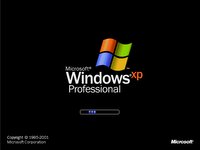Improving Windows XP Boot Time on your Old Computer
Disable the Boot Logo
Yes, removing the boot logo can help you speed up the bootup process by a few seconds. Unfortunately, by doing this, you will not be able to see any boot messages. If you don't have any problems with your computer, this isn't really a problem, and if you ever do, just re-enable it.
- Start -> Run, type msconfig, and click OK.
- Select the BOOT.INI tab.
- Click the NOGUIBOOT check box and click OK.
- Reboot and enjoy.

If you are using a DHCP server to assign an IP address to your computer, consider using a static one instead, this way, the operating system will not have to query the network to get a new address. To assign a static IP to your computer:
- 1- Start-> settings -> Network connection (Classic start menu) or Start->right click "My Network Place", select properties.
- 2- Right click your local network connection, select properties.
- 3- Double click TCP/IP and assign your address manually
Windows has to load up all of its fonts while it is booting up, by removing unnecessary ones, you'll help make your computer start faster.
- 1- Go into the control panel, and double click the fonts folder
- 2- Select all the fonts you do not need and Back them up in another folder (just in case you delete one that you need).
- 3- Go back into your fonts folder and delete them.
Do not delete these fonts, Windows need them: Verdana, Arial, Trebuchet, Tahoma, Times New Roman, MS Sans Serif.
Disable unnecessary servicesXP loads a large number of services at startup, and a lot of them aren't really necessary. Consult this article to learn about which one you should disable.
As a last recommendation, I would suggest that you defragment your drives and clean up your temp directories regularly. After applying all of those tweaks, your computer should be starting approximately 20% faster then before. Enjoy the speed while it last!
See more articles on this topic:



